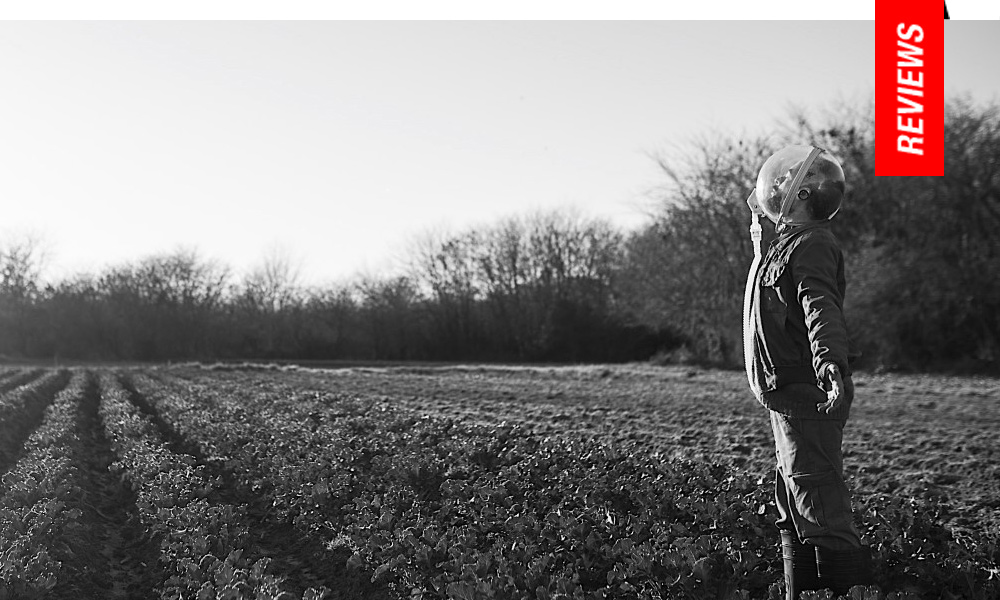If We Shadows Have Offended: Katz Gives the Dogs Their Day in Curious Metaphorical Journey
It feels like a thematically related set of short stories and you’ll either be onboard for its vibrancy or distracted in an attempt to ascertain what it’s trying to say about either its characters in particular or existence in general. A third act which feels uncomfortably prescient for a 2021 release during an unprecedented pandemic will likely usurp all focus—but, as always, it’s the journey which relays the real pleasure.
Sebastian (Daniel Katz) is a loving but wayward man in his thirties, and his dedication to a lonely canine he inherits compromises his stability. But workplace events in relation to the dog lead him to a co-op coalition and an eventual romance (Juliet Zylberberg of Wild Tales, 2014). But his world suddenly changes again, a meteorite slamming into the earth, poisoning the atmosphere. Despite these odds, life goes on and new opportunities arise, with the world at either an end or a beginning.
Throughout her filmography, Katz has been fascinated with portraying the oft-disastrous influence humans in transitional phases can have on one another, at least compared to her well-traveled 2015 title My Friend from the Park. As that equally intriguing title suggests, she also has an interest in defining basic subjects through their relations to something. If not “from the park” it’s here an animal who we assume will be too loud. But neither barking nor the park are exactly important, for the titular pup is dispatched by the second ‘act’ and he’s never showcased as a clamorous sort. Sebastian is our focal point, a drifter who seemingly inherited a dog who misses its original owner based on the complaints of the neighbors.
To quell the situation and bring the dog to work, he loses his position as a graphic designer before Katz treats us to the animated demise of the canine. The playfulness of the animation both avoids the jarring tonal shift of seeing the animal die and sets up the next major transition wherein a meteorite strikes earth and renders the atmosphere unbreathable four feet above ground, forcing humans to either squat on their haunches to move about or pay an exorbitant fee to acquire a helmet to walk upright.
As Sebastian, Daniel Katz has a quiet, sweet sensitivity to him, although he’s a character who initially seems to be a witness for others, whether it be listening to others deliberating, learning or generally communicating. From a coffee klatch of his mother’s friends to a similar scenario with his romantic partner, Sebastian is in the background, busied with preparing sustenance. Eventually, we see him in a logical combination of these two roles, and both Katz contributors seem focused on this vibe rather than an obvious message. Zylberberg has less to do than in her previous collaboration with Ana Katz, but she’s a welcome fit for this beautiful but stark portrait.
Beyond the prescience of its final moments, The Dog Who Wouldn’t Be Quiet really seems to focus on one human’s unpredictable journey wherein he embraces the chaos and the connections. Wheedling his way into a jocular band of young adults in a co-up leads to becoming a father, each death or end is also the mark of transition to a new phase. Katz strikes a tone which feels similar to her fellow countryman Matias Pineiro, and Sebastian sometimes seems like some kind of personification of a modern Shakespearean gypsy or imp (Puck, for instance), although without the vivacious characterization this suggests.
Katz continually upends such comparisons and interpretations, as evidenced by the third act. Maybe the dog didn’t want to be quiet because it missed its owner. Maybe they just wanted to be heard. Either way, we’re all looking for a witness to our experience or someone (or thing) to share our journeys with, for the most part, which seems to be the uniting factor of the narrative. Sebastian begins with pruning bushes, cutting off the dead or decaying branches. We leave him behind tending to plants in the opposite manner, though the world he lives in has changed significantly.
A cycle of life and death, give and take, Katz presents a poetry of exchange and existence beautifully photographed by five credited cinematographers (Gustavo Biazzi, Guillermo Nieto, Marcelo Lavintman, Fer Blanc and Joaquin Niera). Sebastian is, somewhat, an everyman, to conjure another Shakespearean reference, “And one man in his time plays many parts.”
Reviewed on January 31st at the 2021 (virtual) Sundance Film Festival – World Cinema Competition. 73 Mins.
★★★½/☆☆☆☆☆
